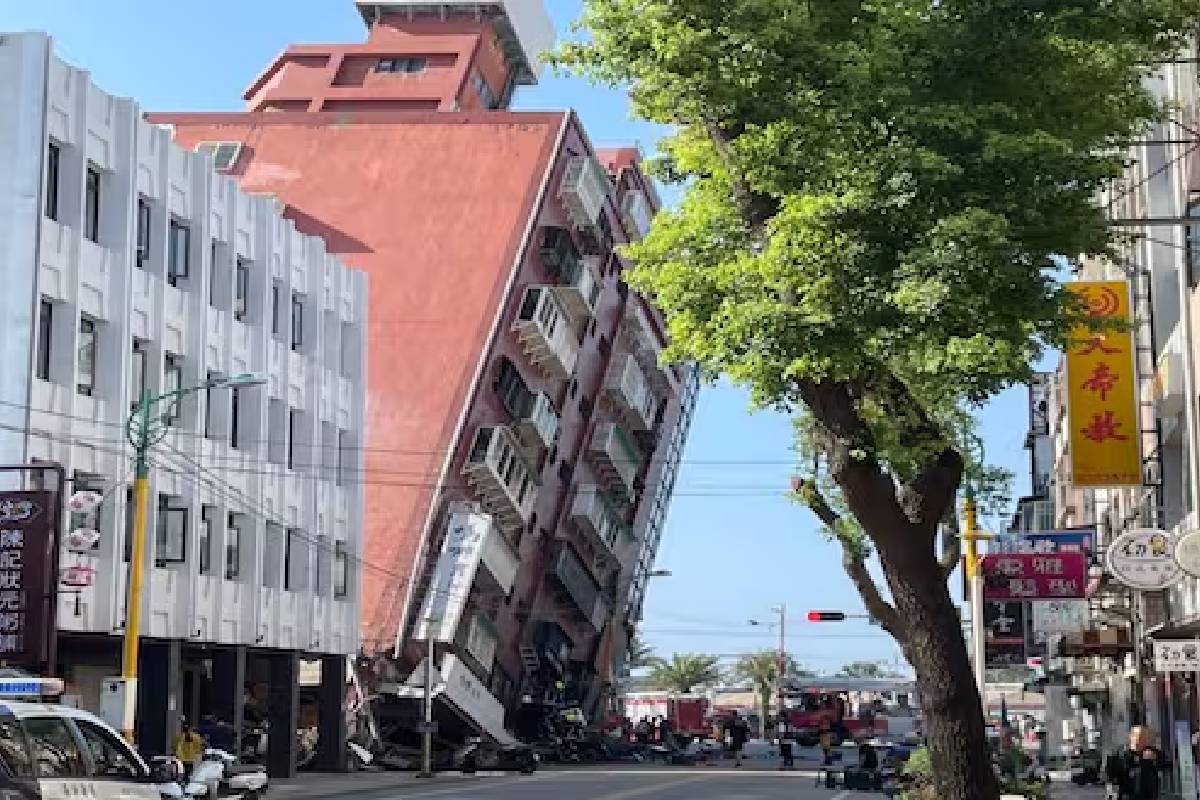NEW DELHI: A powerful 7.7-magnitude earthquake struck Taiwan’s eastern region, triggering tsunami warnings for Taiwan, southern Japan, and the Philippines. The quake, which hit shortly before 8 am local time on Wednesday, April 3, caused significant damage and casualties, with reports of collapsed buildings and numerous injuries.
According to the Taiwan fire department, at least four people are suspected to have been crushed to death by falling rocks in the mountainous county of Hualien, the epicentre of the quake. Over 50 individuals have been reported injured, with more than 20 people trapped under collapsed structures.
The United States Geological Survey (USGS) initially reported the earthquake as magnitude 7.4, with its epicentre 18 kilometres south of Hualien City at a depth of 34.8 kilometres. However, Japan’s Meteorological Agency put the magnitude at 7.7.
ALSO READ:India slams China over renaming places in Arunachal Pradesh
Wu Chien-fu, director of Taipei’s Seismology Centre, described the earthquake as “the strongest in 25 years,” since the devastating 1999 quake that claimed thousands of lives. “The earthquake is close to land and it’s shallow. It’s felt all over Taiwan and offshore islands,” Wu Chien-fu stated. The quake’s impact was felt as far as Shanghai, with reports of collapsed buildings and disrupted power in Taipei, the capital city of Taiwan. Evacuation orders were issued in coastal areas of the Philippines, and tsunami warnings were issued for remote Japanese islands, including Miyakojima Island.
7.7 magnitude #earthquake Hit #Taipei (Taiwan) and #Tsunami warning issued.
At least 4 people reportedly died and 50 others injured.#Taiwan pic.twitter.com/FvMEgiJFh7— The New Indian (@TheNewIndian_in) April 3, 2024
Taiwan, situated near the junction of two tectonic plates, is no stranger to earthquakes. Strict building regulations and disaster awareness have helped mitigate the potential devastation. Despite the severity of the quake, efforts to coordinate rescue operations are underway. President Tsai Ing-wen called for governmental agencies to work together, and the national army has been mobilized to assist. The National Fire Agency confirmed the death toll and stated that nearly 60 people had been treated for quake-related injuries.
While the Pacific Tsunami Warning Center later announced that the tsunami threat had largely passed, the aftermath of the quake is being closely monitored. Both Taiwan and Japan are accustomed to seismic activity, with Japan experiencing around 1,500 earthquakes annually.
The impact of earthquakes extends beyond immediate structural damage, affecting various sectors such as manufacturing and construction. Taiwan Semiconductor Manufacturing Company, the world’s largest chip maker, briefly halted fabrication at some plants, and construction work was suspended at new plant sites.

